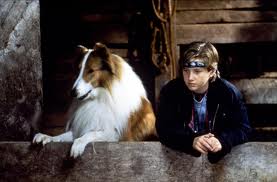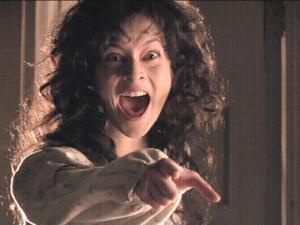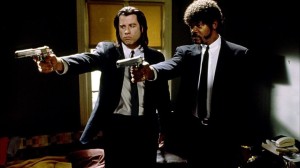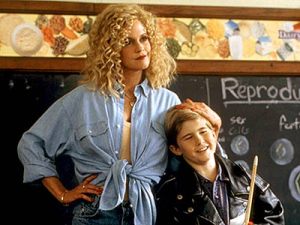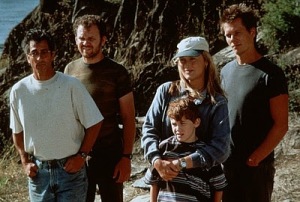Smith’s Verdict: ***
Reviewed by Tanner Smith
It’s strange how 1994’s “Lassie” is not an adaptation of the TV series of the same name, or a remake of the film “Lassie Come Home” for that matter, and yet the dog in this movie shares the exact same characteristics of the infamous smart canine in the original media. How do I know it’s not an adaptation? Because the young hero’s younger sister watches the original show on TV (even though her brother would prefer her to watch MTV—“You’ll thank me when you’re older”). But here’s the thing—the dog in this particular “Lassie” (which, let me remind you, is not supposed to be a remake or adaptation of the original media) is exactly like Lassie! She’s a collie, she’s unbelievably smart for a dog, and it doesn’t help that it’s given the name Lassie, either. Why not just say it’s a modern retelling of the original “Lassie” media? Maybe it is, but why bother mentioning the original at all in this film?
Aside from that questionable element, I’ll admit that I really liked this version of “Lassie.” It’s cute, it’s innocent, and surprisingly well-executed and very well-acted. That, and it features a very smart dog, of course named Lassie.
Lassie has just adopted a city family that has moved to a small farm in the hills of Virginia, after her original owner died in a car accident. She’s given her name by the little daughter Jennifer (Brittany Boyd) watches the “Lassie” show on TV (of course). The family decides to keep her (“for a while,” according to Dad) as they move out into the country. The family’s troubled teenage son Matt (Thomas Guiry) is bored and would rather stay in bed, listening to his Walkman. But Lassie, being the good dog that she is, knows how to get him in the great outdoors. She snatches Matt’s headphones away and leads him to an old swimming hole near the house, with a rope swing that he enjoys using.
The plot thickens when Matt’s dad (Jon Tenney) loses his job. Matt, who grows to love his new home, gets the idea of raising sheep on the land between their farm and the rich Garland farm. The family, with the help of kindly Grandpa (Richard Farnsworth, always welcome) and of course Lassie (to help move the sheep), fixes up the own farmhouse as they all grow more accustomed to rural values.
But of course, there’s a problem in the form of the evil Garland clan. Sam Garland (Frederic Forrest) is a mean-spirited man who has raised two teenage boys who are just as nasty. They’ve made a hefty profit from raising sheep themselves, and are not too thrilled that their new neighbors are taking their sheep (though it’s explained that sheep have to be at a certain part of the spread to be considered property).
Oh, and did I mention they all wear black hats? Or that they have a nicely-decorated house? Or that the boys have fun by racing their ATVs at the sheep to frighten them? Did I even have to mention all that?
Aside from those clichéd characters (and an overwrought climax in the final act, partially caused by the two boys’ behavior), there’s a lot like about “Lassie.” One is how the film captures the essence of the countryside—the beauty of nature, if you will. The dog is a good sport, and the bond that the boy grows with it is in the great tradition of boy-meets-animal stories. And “Lassie” also needs to be credited for its family drama, particularly with the relationship between Matt and his new stepmother Laura (Helen Slater). Laura is sweet and warm; she loves Jennifer very much and would love for Matt to accept her as a new mother figure. But to Matt, the empty space left by his late mother can’t be filled by anyone and thus has trouble accepting this new woman in this family’s life. Eventually, Matt and Laura do share a nice moment together, when Laura tends to Matt’s wounds after being beat up by some local boys. Matt doesn’t want to call Laura “Mom,” but doesn’t want to call her “Laura” anymore either.
Despite being clichéd, “Lassie” works for the most part. It’s enough to grow on me, and worth another viewing. It’s just a cute, good-hearted, feel-good family movie that I can’t bring myself to hate. There’s a lot to like about it.

